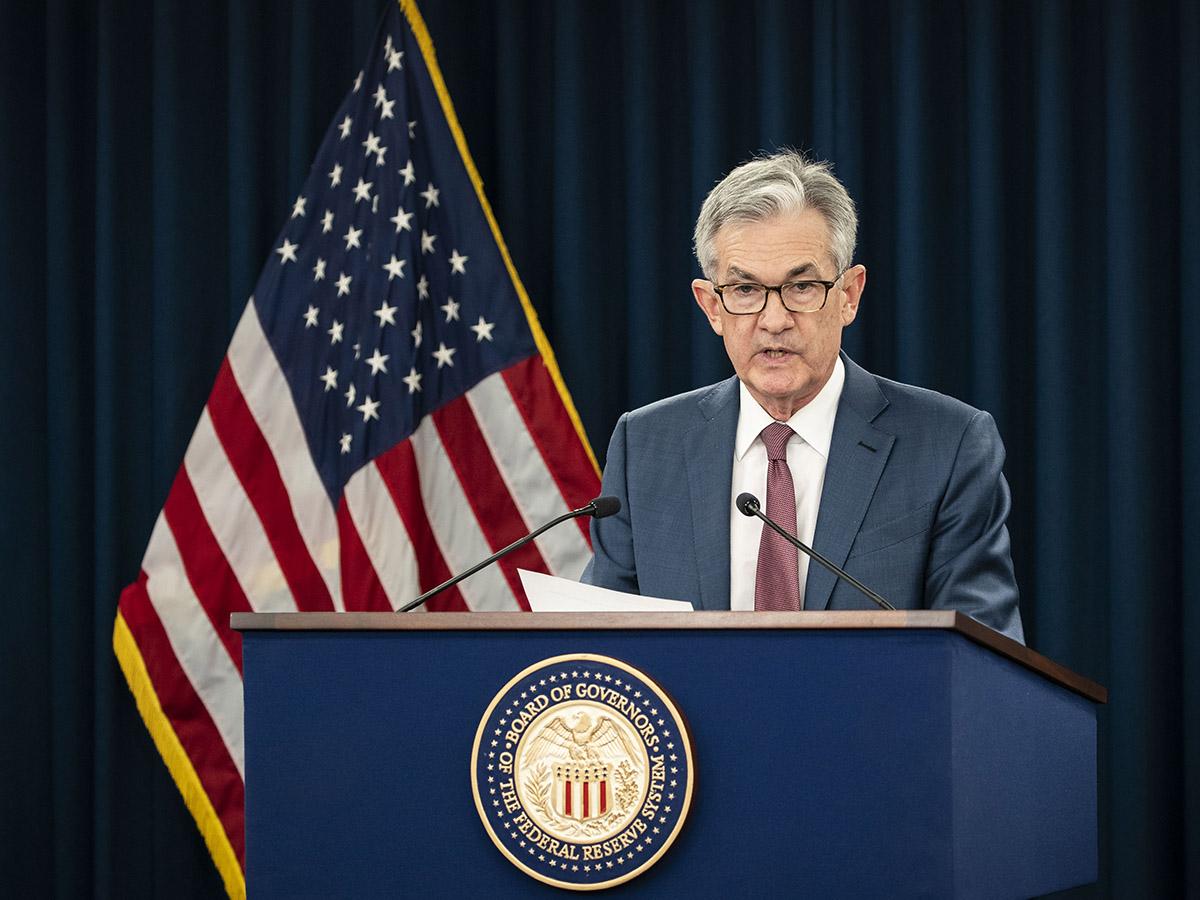If investors have been paying attention, the publication on Wednesday of minutes from the US Federal Reserve’s November meeting shouldn't deliver a significant market shock. The problem is that, while bond and currency markets have been paying attention, the equity market hasn't. Last week several Fed officials issued hawkish comments about the potential for the overnight terminal rate to head to around 5% or higher. This prompted the dollar and rates to stop falling.
Meanwhile, the equity market was too focused on options expiration to pay attention to hawkish Fed officials. That could be a problem when the minutes are released on 23 November.
To understand where the stock market may be heading, one simply needs to look at interest rates and the dollar. Based on policymakers’ recent remarks, the Fed still wants financial conditions to tighten and rates to move higher, which implies that the dollar could strengthen. Stocks cannot thrive in an environment where interest rates are rising, the dollar is strengthening, and monetary policy is tightening. This year is proof of that.
The minutes from the Fed’s 1-2 November meeting are likely to reveal the central bank’s intention to slow the pace of future rate hikes. But they are also expected to indicate that rates may be heading to levels higher than many observers expected at the September meeting, as well as highlighting that financial conditions aren't tight enough to bring down inflation. If that is the minutes’ message, the result could be a stronger dollar, higher rates, and an equity market dip.
A dollar reversal may be coming
The dollar, still recovering from its post-CPI massacre, may be the biggest beneficiary from the Fed minutes. While the Fed doesn't comment on the dollar's strength or weakness, a strong dollar is the Fed's best friend in a fight against inflation and helps tighten financial conditions.
The dollar appears to have formed a diamond reversal pattern since 11 November, as the chart below indicates. This would suggest that the dollar could rise sharply, but it needs to move above 107.25 to confirm the pattern. If that happens, the dollar index could rally back to 111 or 112. It doesn't need to rise to a new high because moving up to 111-112 would inflict pain on risk assets.
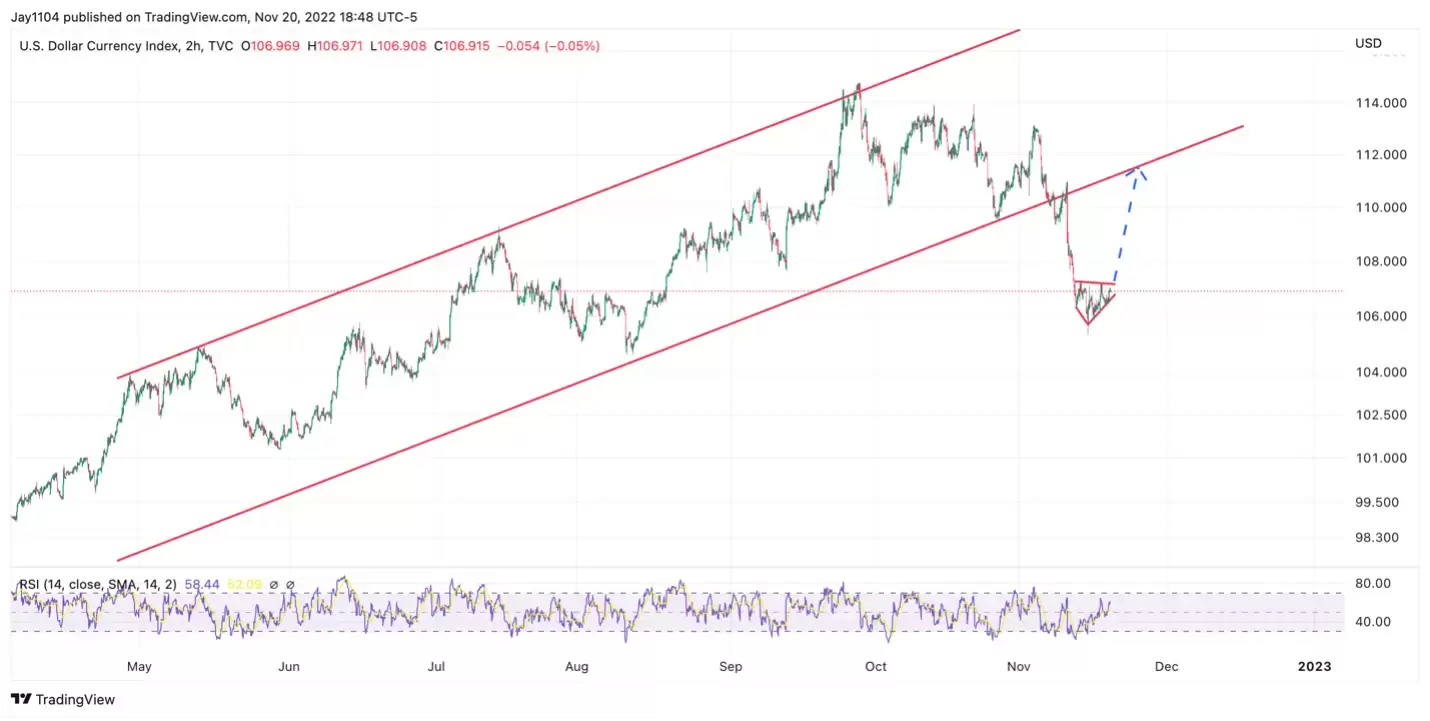
If there is a reversal in the dollar index, a reversal in the S&P 500 might become more likely. The two indexes have been trading inversely to one another for some time now, as can be seen in the chart below. This relationship suggests that a rising dollar would be the worst thing that could happen to the S&P 500.
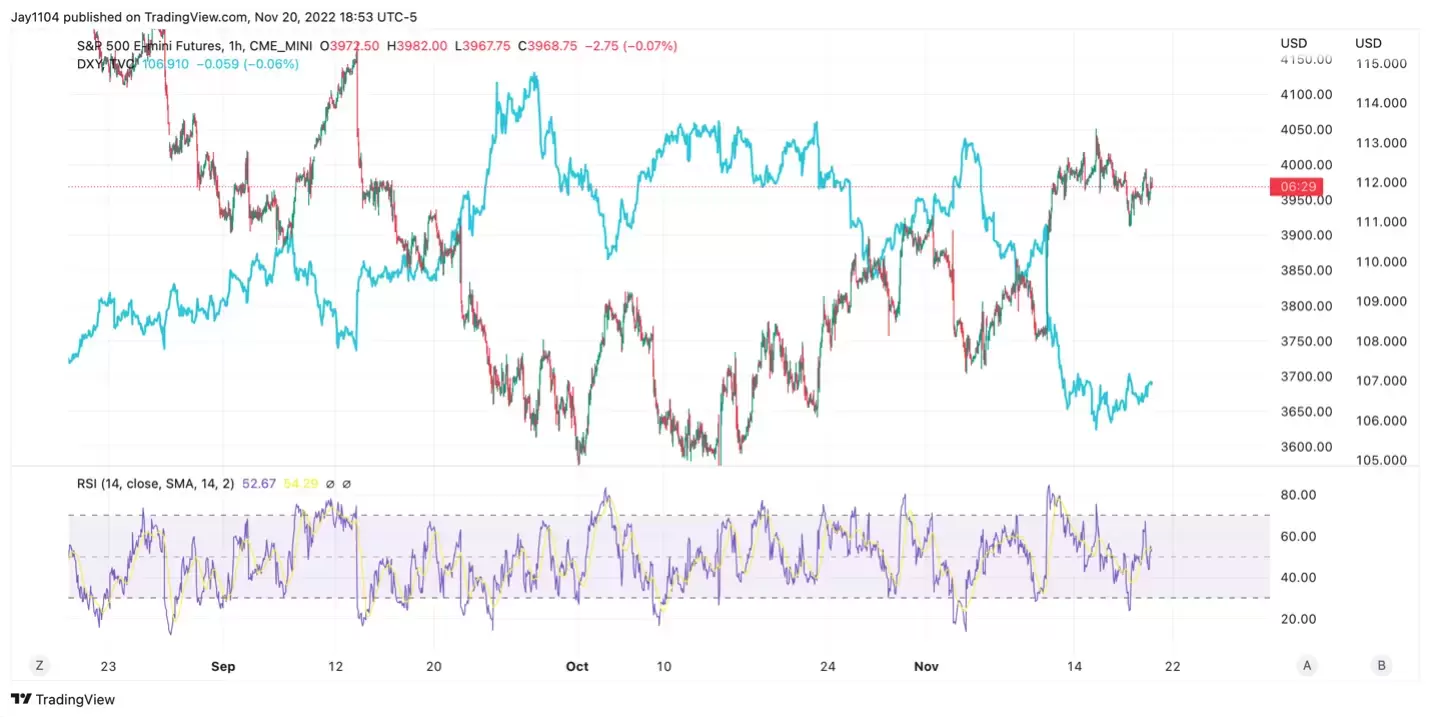
S&P 500 may give back its post-CPI gains
Given the inverse relationship, it’s no surprise that a diamond reversal pattern has also formed in the S&P 500 futures, as shown below. The size of the move following the CPI report and the sharp straight-line rally are unstable. If the index moves lower, as the technical pattern suggests it could, the S&P 500 may fall back to the 3,750 level where the rally began.
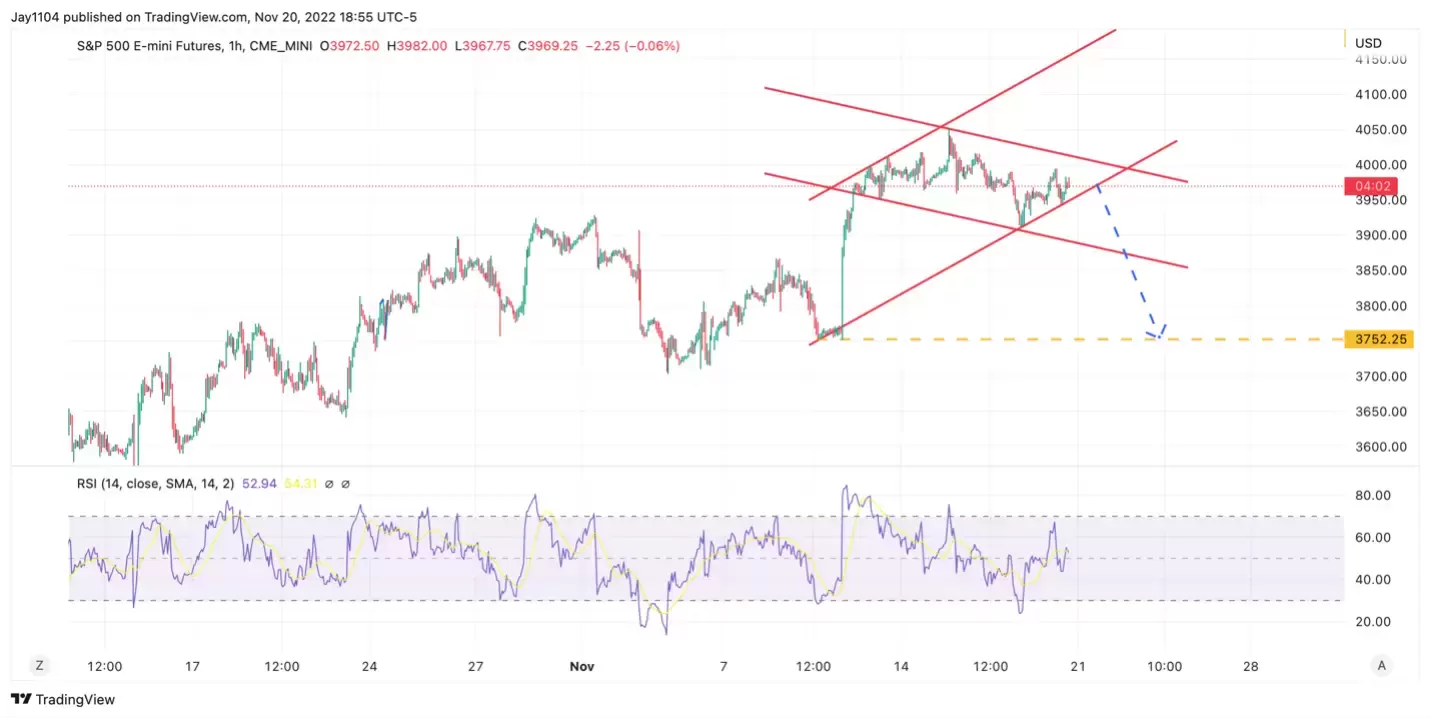
Real yields may be ready to surge
Real yields are more critical than nominal rates. The iShares Treasury Inflation-Protected Securities (TIPS) Bond ETF [TIP] is a convenient way to track real yields. This ETF, which allows investors to hedge against inflation because it is linked to cost-of-living increases, trades inversely to real yields. When TIP rises, it indicates that real yields are falling. Conversely, when TIP falls, real yields are rising. Rising real yields have hurt stocks in 2022, a situation that seems unlikely to change.
Rising real yields certainly help to tighten financial conditions. One reason why the equity market has stopped falling is that the TIP ETF has been trading sideways and consolidating. But again, if the Fed can deliver the correct message in its minutes, the result could be higher yields and a decline for the TIP ETF.
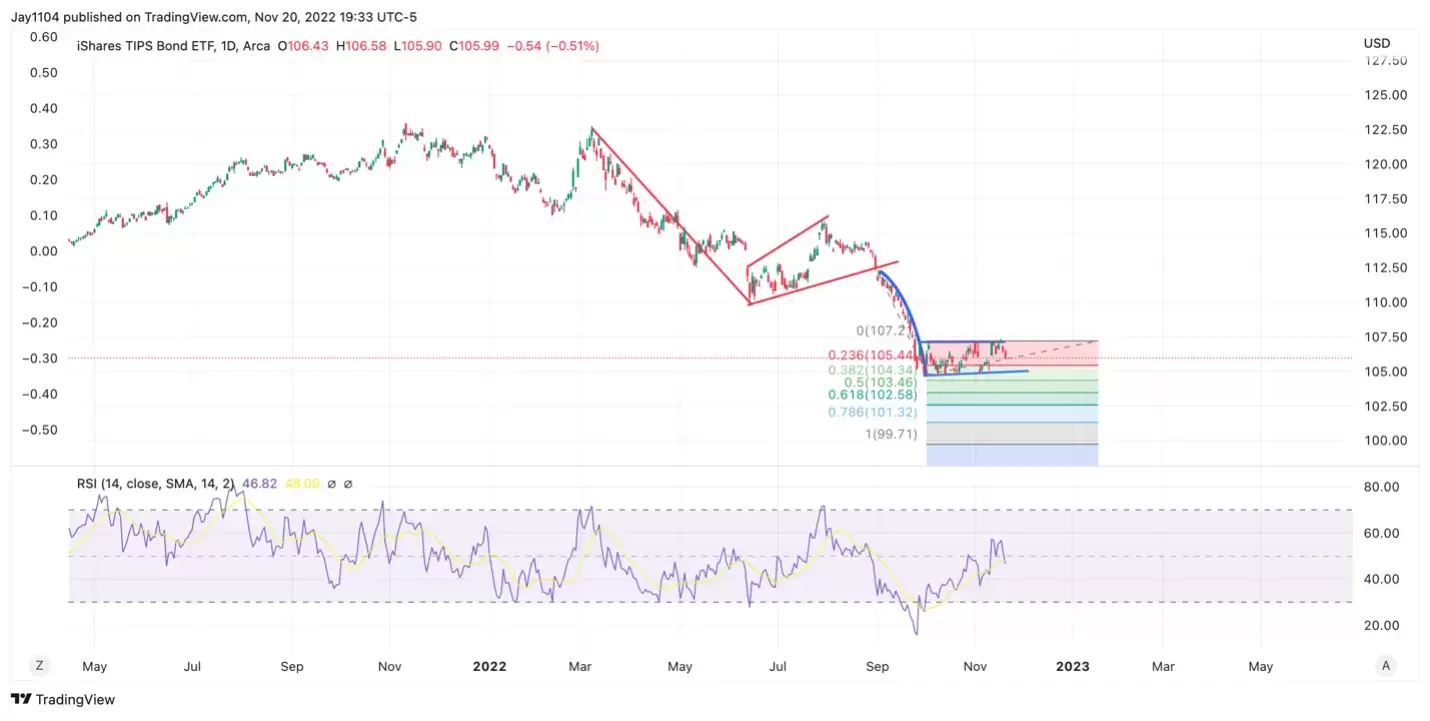
The TIP ETF is displaying what appears to be a bear flag, suggesting that real yields are heading higher and financial conditions are likely to tighten. It also means that stock prices are likely to head lower. The TIP ETF would need to fall below $105 to confirm a bearish breakdown. If that happens, it could result in the TIP making a new low and potentially sending the ETF below $100.
If the Fed minutes fail to send equity markets the message that the Fed desires, there is a backup plan, with Fed chair Jay Powell expected to make a speech on 30 November. All things considered, it may be best not to fight the Fed.
Charts used with the permission of Bloomberg Finance LP. This report contains independent commentary to be used for informational and educational purposes only. Michael Kramer is a member and investment adviser representative with Mott Capital Management. Mr Kramer is not affiliated with this company and does not serve on the board of any related company that issued this stock. All opinions and analyses presented by Michael Kramer in this analysis or market report are solely Michael Kramer's views. Readers should not treat any opinion, viewpoint, or prediction expressed by Michael Kramer as a specific solicitation or recommendation to buy or sell a particular security or follow a particular strategy. Michael Kramer's analyses are based upon information and independent research that he considers reliable, but neither Michael Kramer nor Mott Capital Management guarantees its completeness or accuracy, and it should not be relied upon as such. Michael Kramer is not under any obligation to update or correct any information presented in his analyses. Mr. Kramer's statements, guidance, and opinions are subject to change without notice. Past performance is not indicative of future results. Past performance of an index is not an indication or guarantee of future results. It is not possible to invest directly in an index. Exposure to an asset class represented by an index may be available through investable instruments based on that index. Neither Michael Kramer nor Mott Capital Management guarantees any specific outcome or profit. You should know the real risk of loss in following any strategy or investment commentary presented in this analysis. Strategies or investments discussed may fluctuate in price or value. Investments or strategies mentioned in this analysis may not be suitable for you. This material does not consider your particular investment objectives, financial situation, or needs and is not intended as a recommendation appropriate for you. You must make an independent decision regarding investments or strategies in this analysis. Upon request, the advisor will provide a list of all recommendations made during the past 12 months. Before acting on information in this analysis, you should consider whether it is suitable for your circumstances and strongly consider seeking advice from your own financial or investment adviser to determine the suitability of any investment. Michael Kramer and Mott Capital received compensation for this article.
Disclaimer: CMC Markets is an execution-only service provider. The material (whether or not it states any opinions) is for general information purposes only, and does not take into account your personal circumstances or objectives. Nothing in this material is (or should be considered to be) financial, investment or other advice on which reliance should be placed. No opinion given in the material constitutes a recommendation by CMC Markets or the author that any particular investment, security, transaction or investment strategy is suitable for any specific person. The material has not been prepared in accordance with legal requirements designed to promote the independence of investment research. Although we are not specifically prevented from dealing before providing this material, we do not seek to take advantage of the material prior to its dissemination.
